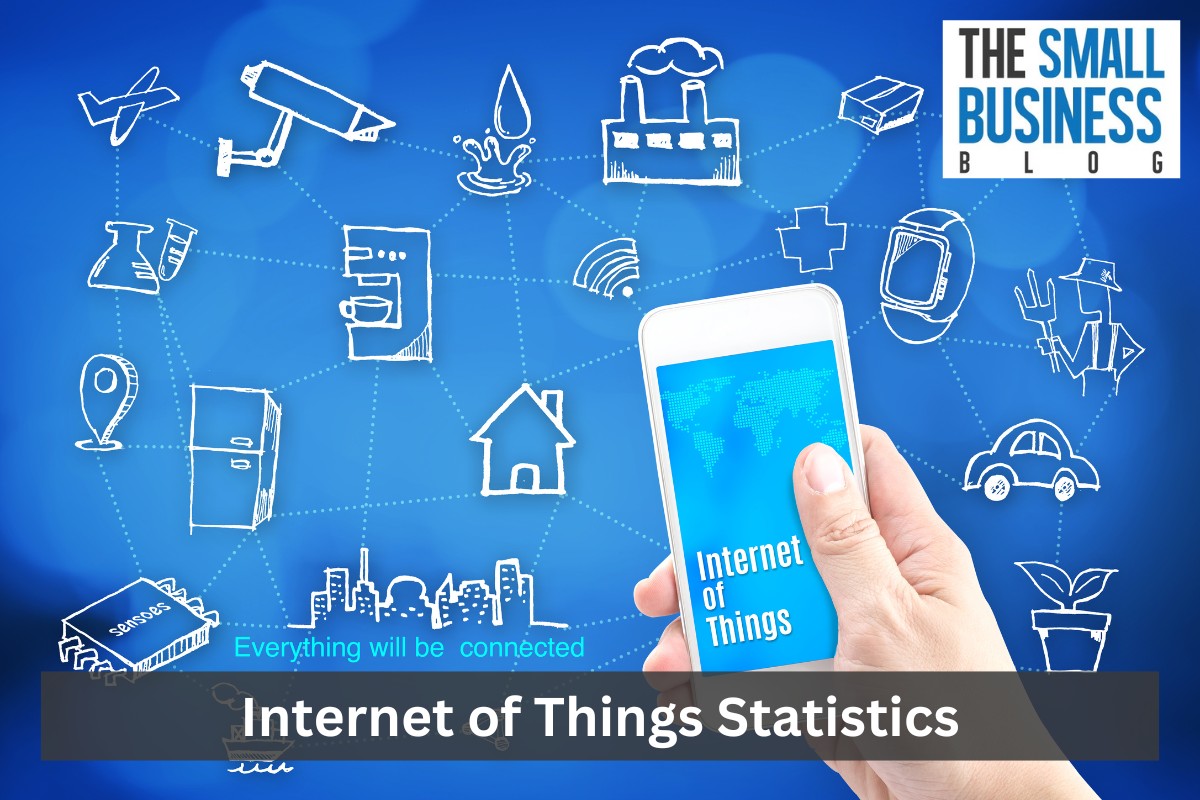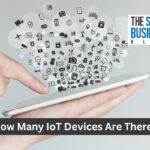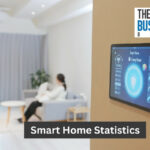The Internet of Things (IoT) has emerged as a revolutionary technological trend that’s transforming the way we interact with our surroundings.
From smart thermostats to wearable fitness trackers, IoT devices have become an integral part of our daily lives.
IoT refers to a network of devices that are embedded with sensors, software, and other technologies, allowing them to communicate and exchange data with other devices and systems over the internet.
In this article, we’ll explore Internet of Things statistics, and learn more about the growth, impact, and potential of this interconnected network.
Read on to learn more!
Post Contents
- 1 Key Statistics
- 2 General Internet of Things Statistics in 2024
- 2.1 1. In 2023, the number of Internet of Things devices reached 15.14 billion around the world
- 2.2 2. By 2030, the number of Internet of Things devices are predicted to be around 29.42 billion
- 2.3 3. 871 million units of smart home devices were shipped in 2022
- 2.4 4. By 2027, the number of smart home devices shipped is predicted to increase to 1.23 billion units
- 2.5 5. 21% of adults in the US use smartwatches or fitness trackers
- 2.6 6. By 2025, 152,000 Internet of Things devices connect to the internet every minute
- 2.7 7. 67% of Internet of Things usage comes from North America, Western Europe, and China
- 2.8 8. 44% of companies in the US have utilized Internet of Things
- 2.9 9. By 2025, the amount of data coming from Internet of Things devices is expected to reach 73.1 zettabytes
- 3 Internet of Things Market Statistics
- 3.1 10. Internet of Things boost the United States GDP by 10%
- 3.2 11. 41% of Internet of Things’ economic benefits will come from operations optimization
- 3.3 12. The global IoT healthcare market was forecasted to be worth $158.1 billion in 2022
- 3.4 13. The original prediction for global expenditure on Internet of Things technology for 2023 is $1.1 trillion
- 3.5 14. $805 billion are spent on Internet of Things technology in 2023
- 4 Internet of Things Security Statistics
- 4.1 15. In June of 2022, the world experienced 13 million Internet of Things malware attacks
- 4.2 16. In the 4th quarter of 2021, Internet of Things attacks dropped by 9%
- 4.3 17. The most common password for Internet of Things devices is “admin” with 20.99 million uses over a 45-day period
- 4.4 18. 42% of companies can detect insecure Internet of Things devices but only 14% replace them after detection
- 4.5 19. 98% of Internet of Things data is unencrypted, risking the exposure of personal and private information on networks
- 4.6 20. 48% of businesses do not know if their Internet of Things devices have been breached
- 4.7 21. Internet of Things devices are attacked within 5 minutes of connecting to the internet
- 4.8 22. In 3 out of 4 cases, routers are the gateway for Internet of Things attacks
- 5 Conclusion
- 6 Sources
Key Statistics
- There are 15.14 billion Internet of Things devices around the world
- 98% of Internet of Things data is unencrypted
- In June 2022, there were 13 million Internet of Things malware attacks globally
- 44% of US companies utilize Internet of Things
- Internet of Things boost US GDP by 10%
- 871 million smart home devices were shipped in 2022
General Internet of Things Statistics in 2024
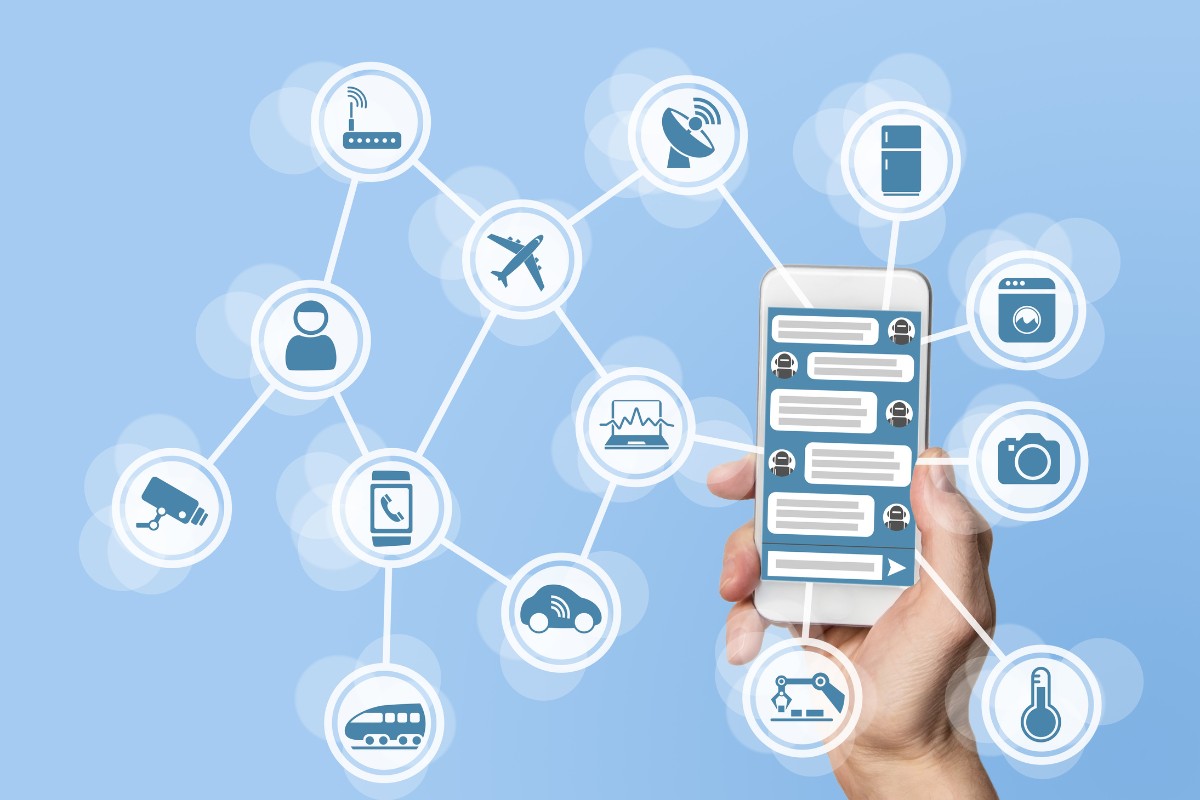
1. In 2023, the number of Internet of Things devices reached 15.14 billion around the world
The tech world has seen an amazing surge in the Internet of Things (IoT) statistics scene.
Right now, in 2023, the number of IoT gadgets has hit 15.14 billion, showing off the fantastic growth this field has gone through over time.
As the years have rolled by, more and more people have hopped on the IoT train, bringing smart devices into homes all around the world.
That enormous count of 15.14 billion IoT devices we’ve logged in 2023 is a big deal, marking a super important point in how technology has evolved.
Throughout the years, here is a timeline highlighting the rise of the number of Internet of Things (IoT) devices:
- In 2019, there were 8.90 billion Internet of Things (IoT) devices
- In 2020, there were 9.76 billion Internet of Things (IoT) devices
- In 2021, there were 11.28 billion Internet of Things (IoT) devices
- In 2022, there were 13.14 billion Internet of Things (IoT) devices
- In 2023, there are 15.14 billion Internet of Things (IoT) devices
(Statista)
2. By 2030, the number of Internet of Things devices are predicted to be around 29.42 billion
By the end of this decade, a web of devices, from smart appliances to wearables, is expected to be instilled into our very existence.
With 29.42 billion Internet of Things devices projected to be in use globally, the way we interact with the world around us is destined to undergo a significant transformation.
As the Internet of Things ecosystem expands, cities could become smarter, optimizing energy consumption and resource allocation.
Businesses might gain insights into consumer behavior like no other, enabling more personalized products and services.
Meanwhile, individuals could experience enhanced convenience and efficiency in their daily lives.
(Statista)
3. 871 million units of smart home devices were shipped in 2022
The year 2022 witnessed a substantial surge in the adoption of smart home devices.
With a staggering 871 million units shipped globally, these connected gadgets have woven their way into the fabric of modern living.
This article delves into the significant statistics that shed light on the widespread integration of the Internet of Things (IoT) into our homes.
Smart home devices, powered by the Internet of Things technology, have experienced a remarkable surge in popularity.
A notable 871 million units were shipped in 2022, highlighting the growing trend of integrating smart technology into everyday household items.
These devices, ranging from smart thermostats and security cameras to voice-activated assistants, offer convenience and efficiency, enhancing the quality of life for countless individuals.
(G2)
4. By 2027, the number of smart home devices shipped is predicted to increase to 1.23 billion units
Forecasters of Internet of Things statistics predict that this growth has yet to stop.
Projections expect a future where, by 2027, the number of these devices is expected to soar to a remarkable 1.23 billion.
Several factors contribute to this meteoric rise in smart home devices.
Firstly, the growing accessibility of high-speed internet and the proliferation of smartphones have created an environment ripe for IoT expansion.
Consumers now expect the convenience of controlling various aspects of their homes remotely, from adjusting thermostats to managing security systems, and smart home devices deliver precisely that.
Moreover, as these devices become more intuitive and user-friendly, they bridge the gap between tech-savvy early adopters and the wider consumer base.
The appeal of streamlined living, energy efficiency, and enhanced security drives adoption across demographics.
(G2)
5. 21% of adults in the US use smartwatches or fitness trackers
Over 21% of adults in the United States have embraced the convenience of smartwatches and fitness trackers.
Internet of Things devices have become an integral part of our daily routines.
Smartwatches and fitness trackers are no longer just luxuries; they’re also companions that provide real-time insights into our health and activities.
While health tracking remains a primary focus of IoT devices, their utility extends far beyond monitoring heart rates.
Smartwatches now possess digital wallet functionalities, enabling users to make payments with a simple flick of the wrist.
This combination of technology and convenience has transformed smartwatches into multipurpose tools that ease up our lives.
(DataProt)
6. By 2025, 152,000 Internet of Things devices connect to the internet every minute
In 2025, the Internet of Things (IoT) is truly set for a series of growth, with a staggering 152,000 new IoT devices connecting to the internet every minute by that year.
The IoT encompasses everyday objects embedded with sensors and connectivity that enable data exchange over the internet.
By 2025, the pace of Internet of Things expansion will see hundreds of thousands of new devices coming online each minute.
This surge is driven by technological advancements, lower sensor costs, and the demand for automation across sectors.
(PurpleSec)
7. 67% of Internet of Things usage comes from North America, Western Europe, and China

The world is rapidly evolving with technological advancements, and one of the most significant trends in recent years, as we know it, is the Internet of Things (IoT).
This phenomenon has not only revolutionized industries but has also become an integral part of the ecosystem of various leading countries.
Statistics reveal that the heart of Internet of Things activity lies within a few key regions.
A staggering 67% of IoT usage is concentrated in three major areas: North America, Western Europe, and China.
These regions have emerged as the primary drivers of IoT adoption and implementation, showcasing their commitment to harnessing the potential of interconnected technologies.
(G2)
8. 44% of companies in the US have utilized Internet of Things
Evidently, the Internet of Things (IoT) has emerged as a game-changer.
Recent findings shed light on IoT adoption in the US: 44% of companies have integrated Internet of Things into their operations.
The Internet of Things’ influence spans across sectors like healthcare and manufacturing.
With 44% of US companies adopting IoT, it’s clear that this technology is gaining traction.
This adoption isn’t just transforming businesses but also enhancing the way consumers experience various products and services.
(PurpleSec)
9. By 2025, the amount of data coming from Internet of Things devices is expected to reach 73.1 zettabytes
By the year 2025, experts predict that the collective output of data from Internet of Things devices will skyrocket to an astounding 73.1 zettabytes (ZB).
This enormous figure showcases the immense capacity of these interconnected gadgets to capture and transmit information from various corners of our lives.
As this huge amount of data sweeps in, it brings forth a multitude of opportunities and challenges.
On one hand, this much information could revolutionize industries, enabling insights into consumer behaviors, streamlined automation, and enhanced decision-making processes.
On the other hand, managing and securing such colossal amounts of data demands secure infrastructures and firm cybersecurity measures.
(DataProt)
Internet of Things Market Statistics
10. Internet of Things boost the United States GDP by 10%
Internet of Things, the network linking interconnected devices and objects, has far-reaching implications for economic growth.
In the US, this technology is set to play a crucial role, contributing a projected 10% increase to the GDP.
Several key factors contribute to the anticipated economic impact of IoT.
The widespread adoption of smart devices across diverse sectors, such as healthcare, manufacturing, transportation, and agriculture, leads to improved efficiency, cost reduction, and smarter decision-making.
This digital transformation, driven by the Internet of Things, empowers businesses to streamline their operations, optimize supply chains, and create more innovative solutions for the country.
(DataProt)
11. 41% of Internet of Things’ economic benefits will come from operations optimization
One of the most exciting findings in the available data is that a big chunk of the economic benefits brought by the Internet of Things will come from something called “operations optimization.”
This might sound a bit technical, but it’s actually quite simple.
It’s all about making things work better and smarter.
Imagine factories running smoother, farms producing more efficiently, and cities managing resources in a more effective way, all because of the Internet of Things.
This category alone is expected to contribute a whopping 41% of the total value that IoT will bring to the table.
(Statista)
12. The global IoT healthcare market was forecasted to be worth $158.1 billion in 2022
According to a recent study, the Internet of Things healthcare market is poised for substantial growth, projected to have reached a value of $158.1 billion in the past year.
The growth of the Internet of Things healthcare market is driven by factors such as the rising demand for remote patient monitoring, the need for efficient healthcare management systems, and the pursuit of enhanced patient experiences.
IoT-enabled wearable devices, smart medical equipment, and real-time health tracking apps have become integral components of modern healthcare strategies.
(DataProt)
13. The original prediction for global expenditure on Internet of Things technology for 2023 is $1.1 trillion
The year 2023 witnessed an increase in Internet of Things spending, albeit falling short of earlier projections due to the global pandemic.
Originally estimated at $1.1 trillion in 2019, the actual spending growth in the face of the coronavirus crisis was more restrained.
While the expenditure did surge compared to the previous year, it did not align with the pre-pandemic expectations.
The pandemic’s disruptive effects on economies and consumer behavior played a significant role in diverting the trajectory of IoT expenditure.
This situation merely presents the influence of external factors on statistical forecasts and the necessity for adaptability in uncertain times.
(Statista)
14. $805 billion are spent on Internet of Things technology in 2023
In the present year, 2023, the world’s commitment to Internet of Things technology is obvious through an investment of $805 billion globally.
This vast financial expenditure signifies the substantial confidence placed in IoT’s transformative capabilities.
From smart homes to industrial automation, Internet of Things’ reach extends across a wide spectrum of sectors.
The monetary investment shows Internet of Things’ ever-expanding influence.
With billions of dollars directed towards its development, IoT’s presence has become crucial.
This technology has bridged the gap between the physical and digital realms, fostering smooth communication between devices and systems.
From healthcare to agriculture, businesses and industries are harnessing Internet of Things’ potential to optimize operations and improve overall efficiency.
(Statista)
Internet of Things Security Statistics
15. In June of 2022, the world experienced 13 million Internet of Things malware attacks

Recent statistics show an alarming record of the escalating threats in the area of Internet of Things (IoT).
In December 2022, reported IoT attacks exceeded a staggering 10.54 million cases, a significant jump from the nearly 6 million attacks recorded in the same month of 2021.
Notably, June 2022 witnessed the peak, with approximately 13 million attacks detected.
These numbers highlight the urgent need for enhanced IoT security measures.
The surge in IoT attacks highlights the vulnerabilities inherent in the growing network of interconnected devices.
The increasing adoption of smart devices introduces potential gateways for malicious activities, from compromising personal data to disrupting critical infrastructure.
(Statista)
16. In the 4th quarter of 2021, Internet of Things attacks dropped by 9%
In 2020, there was a noticeable surge in attacks on Internet of Things (IoT) devices.
These attacks exploit the vulnerabilities in connected devices, causing data breaches and other serious consequences.
However, a significant change occurred in the last quarter of 2021 – the share of IoT attacks dropped by 9% compared to the same quarter in the previous year (from 19% to 9%).
This decrease in attacks could be attributed to a few factors.
The increased awareness of IoT security risks might have prompted better security measures by manufacturers and users.
Advances in cybersecurity technologies, such as better intrusion detection systems and quicker response tactics, may also have played a role in deterring attackers.
(Statista)
17. The most common password for Internet of Things devices is “admin” with 20.99 million uses over a 45-day period
The Internet of Things (IoT) has seamlessly integrated into our lives, but behind its convenience lies a surprising reality.
Recent statistics shed light on a glaring vulnerability that threatens the security of these interconnected devices.
In a mere 45-day span, a staggering 20.99 million instances of a single password, “admin,” were recorded as the key to unlock IoT devices.
This alarming revelation underscores a major concern surrounding the security practices of IoT users.
While the simplicity of “admin” may make device setup seem effortless, it also makes unauthorized access astonishingly easy.
Over a 45-day period, the following are the most common passwords for Internet of Things devices in 2021:
- The password “admin” has been used on Internet of Things devices for 20.99 million times
- The password “root” has been used on Internet of Things devices for 20.99 million times
- The password “nc11” has been used on Internet of Things devices for 20.99 million times
- The password “user” has been used on Internet of Things devices for 9.78 million times
- The password “enable” has been used on Internet of Things devices for 3.75 million times
- The password “0” has been used on Internet of Things devices for 3.58 million times
(Statista)
18. 42% of companies can detect insecure Internet of Things devices but only 14% replace them after detection
Recent statistics shed light on the state of Internet of Things security.
A survey conducted among various organizations reveals that 42% of them have the capability to identify insecure IoT devices within their networks.
This statistic indicates the growing awareness among businesses about the potential vulnerabilities posed by these connected devices.
Interestingly, the data also indicates that only a mere 14% of organizations take immediate action by replacing these insecure Internet of Things devices once they are identified.
This suggests that while awareness exists, there is room for improvement when it comes to addressing security concerns promptly.
(G2)
19. 98% of Internet of Things data is unencrypted, risking the exposure of personal and private information on networks
Nearly all (98%) of Internet of Things traffic remains unencrypted, leaving personal and confidential data vulnerable on networks.
This significant statistic sheds light on the pressing issue of inadequate security measures within the Internet of Things (IoT) ecosystem.
In the Internet of Things, devices are seamlessly integrated into daily life, spanning from smart home gadgets to wearable devices.
However, this convenience is countered by a major concern: the lack of robust security.
Recent statistics reveal that only a mere 2% of Internet of Things traffic is encrypted, leaving the vast majority of data transfers unprotected.
This exposes sensitive information to potential breaches by unauthorized entities.
(G2)
20. 48% of businesses do not know if their Internet of Things devices have been breached
Recent data exposes a concerning reality: an alarming 48% of businesses lack the capability to detect breaches in their Internet of Things devices.
This revelation highlights a significant challenge in the realm of IoT security.
In a world where everyday items are becoming smarter and more connected, the vulnerabilities associated with Internet of Things (IoT) devices are often overlooked.
The charm of convenience masks the potential risks that these devices carry.
The failure to identify breaches could lead to data leaks, privacy violations, and even more serious cyber threats.
(G2)
21. Internet of Things devices are attacked within 5 minutes of connecting to the internet
Recent statistics also broadcast a concerning trend in the world of technology: Internet of Things (IoT) devices are increasingly becoming targets for cyberattacks within minutes of being connected to the internet.
Research has revealed a startling fact: IoT devices are vulnerable to cyberattacks within just five minutes of connecting to the internet.
The rapid onset of attacks can be due to various factors.
Many IoT devices prioritize usability over security, often leaving them vulnerable with weak passwords, outdated software, and the lack of encryption.
The large number of interconnected devices provides a wide surface for cybercriminals to exploit.
(PurpleSec)
22. In 3 out of 4 cases, routers are the gateway for Internet of Things attacks
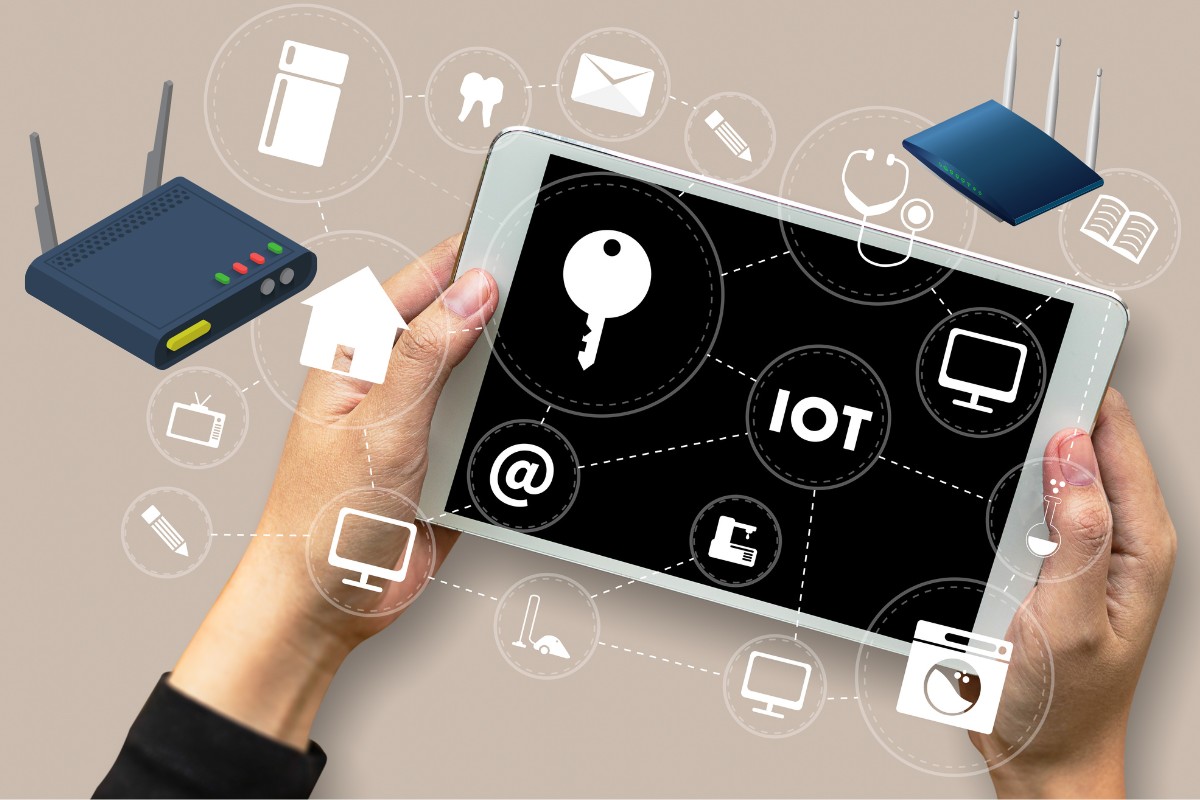
In 75% of cases, routers act as a gateway for Internet of Things attacks, revealing a critical security challenge in the realm of the Internet of Things (IoT).
Routers, responsible for facilitating data exchange between devices and the internet, have become indispensable in modern households and businesses.
Yet, their widespread usage has made them an attractive target for cybercriminals seeking unauthorized access to IoT devices.
Exploiting vulnerabilities in routers grants hackers potential control over IoT devices, putting sensitive data, privacy, and even vital systems at risk.
(PurpleSec)
Conclusion
Amidst Internet of Things statistics, a lot of compelling information unfolds.
The surge from 8.9 billion IoT devices in 2019 to 15.14 billion in 2023 signifies a great shift in modern living.
Yet, vulnerabilities are still abundant, evident in malware attacks and weak passwords, demanding a much more rigorous security.
However, the promise of IoT’s impact is massive.
It propels economies, shapes industries, and redefines healthcare.
To navigate this new technology, collaborative efforts are necessary: policymakers ensuring regulation, corporations driving innovation while prioritizing security, and individuals embracing awareness of this new and emerging innovation.







